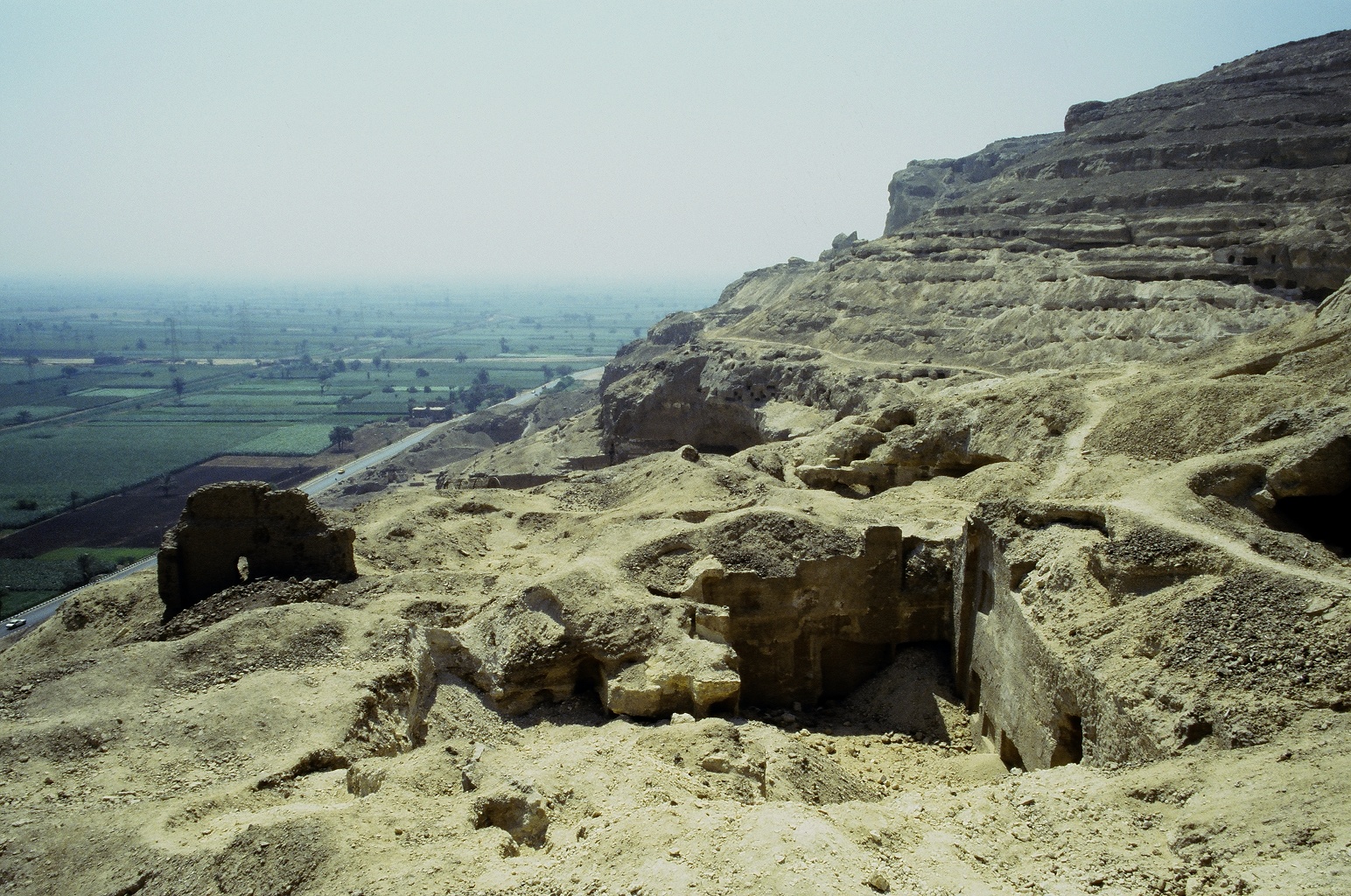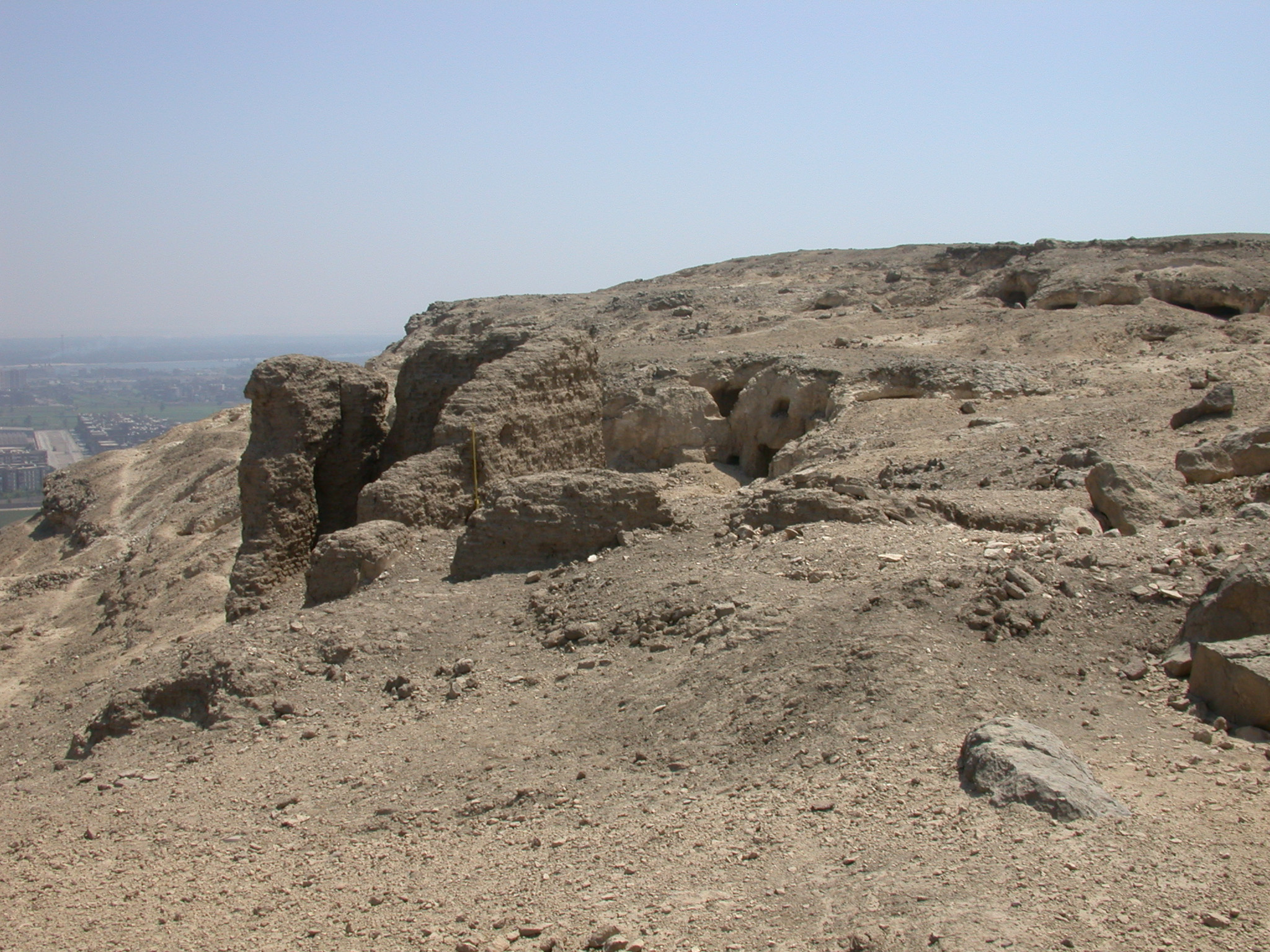Click here for English version
Click here for Japanese version: コプト教関連遺構
Deir el-Meitin: Mit diesem Namen bezeichneten die französischen Ägyptologen Chassinat und Palanque das im Südteil der Nekropole von Assiut gelegene Kloster. Der Name kann übersetzt werden als ”Das Kloster der Toten" (es wird in der Forschung auch als Deir al-Muttin or Deir al-Mazall bezeichnet). Auch der Schriftsteller Al-Maqrizi (gest. 1441 n. Chr.) erwähnte dieses Kloster und berichtete, dass es bereits zu seiner Zeit verlassen war. Lediglich ein jährliches Fest sei dort noch gefeiert worden. Heute sind nur noch die Ruinen des Baus aus luftgetrockneten Ziegeln sichtbar. Während der letzten 100 Jahre haben die Reste des Klosters stark gelitten.

Deir el-Azzam: Das "Kloster der Knochen" liegt auf dem Plateau des Gebel Assiut. Auch von diesem Kloster ist nur noch eine Ruine erhalten. Wenn es mit dem von al-Maqrizi erwähnten „Kloster der Sieben Berge” identisch ist, dann wurde es im Jahre 1418 n.Chr. einen Überfall zerstört. Auf dem Bergplateau liegen nicht nur die Klosterruinen, sondern auch eine große Fläche mit Brennöfen und meterhohen Schichten koptischer Keramik, die daher Kom el-Shukafa genannt wird.

Publikationen:
J. Kahl, The Cave of John of Lykopolis, in: Gawdat Gabra/Hany N. Takla (Hgg.), Christianity and Monasticism in Middle Egypt. Minya and Asyut, Cairo 2015, 255-264.
J. Kahl, Asyut and the Asyut Project, in: Seven Seasons at Asyut. First Results of the Egyptian-German Cooperation in Archaeological Fieldwork, TAP 2, Wiesbaden 2012, 19-20 (ch. 5.9 Roman to Byzantine Period).
I. Eichner, Th. Beckh, The late antique and medieval Monuments of the Gebel Asyut al-gharbi, in: J. Kahl, M. El-Khadragy, U. Verhoeven, S. Prell, I. Eichner, Th. Beckh, The Asyut Project: Seventh Season of Fieldwork (2009), in: SAK 39, 2010, 207-210, Tf. 18-19.
J. Kahl, The mountain plateau: the area of Deir el-Azzam and Kom el-Shuqafa, in: J. Kahl, M. El-Khadragy, U. Verhoeven, S. Prell, I. Eichner, Th. Beckh, The Asyut Project: Seventh Season of Fieldwork (2009), in: SAK 39, 2010, 193-195, Tf. 15.
Deir el-Meitin: The French Egyptologists Chassinat and Palanque named the monastery situated in the southern part of the necropolis of Asyut. The name can be translated as “The Monastery of the Dead” (it is also referred to as Deir al-Muttin or Deir al-Mazall in the research). The writer Al-Maqrizi (died in 1441 AD) also mentioned the monastery and reported that it was already abandoned in his time. Only an annual festival had been celebrated there. Today only the ruins of the building structure of sun-dried (mud-) brick are visible. During the last 100 years the ruins of the monastery suffered heavily.

Deir el-Azzam: The “Monastery of bones” is located on the plateau of Gebel Asyut. Only a ruin of this monastery is preserved. If it actually is the “Monastery of Seven Mountains” mentioned by al-Maqrizi, then it was destroyed by a raid in 1418 AD. On the mountain plateau lie not only the ruins of this monastery but also a large area with kilns and meters of Coptic pottery layers. Therefore the area was called Kom el-Shukafa.

Publications:
J. Kahl, The Cave of John of Lykopolis, in: Gawdat Gabra/Hany N. Takla (Hgg.), Christianity and Monasticism in Middle Egypt. Minya and Asyut, Cairo 2015, 255-264.
J. Kahl, Asyut and the Asyut Project, in: Seven Seasons at Asyut. First Results of the Egyptian-German Cooperation in Archaeological Fieldwork, TAP 2, Wiesbaden 2012, 19-20 (ch. 5.9 Roman to Byzantine Period).
I. Eichner, Th. Beckh, The late antique and medieval Monuments of the Gebel Asyut al-gharbi, in: J. Kahl, M. El-Khadragy, U. Verhoeven, S. Prell, I. Eichner, Th. Beckh, The Asyut Project: Seventh Season of Fieldwork (2009), in: SAK 39, 2010, 207-210, Tf. 18-19.
J. Kahl, The mountain plateau: the area of Deir el-Azzam and Kom el-Shuqafa, in: J. Kahl, M. El-Khadragy, U. Verhoeven, S. Prell, I. Eichner, Th. Beckh, The Asyut Project: Seventh Season of Fieldwork (2009), in: SAK 39, 2010, 193-195, Tf. 15.
